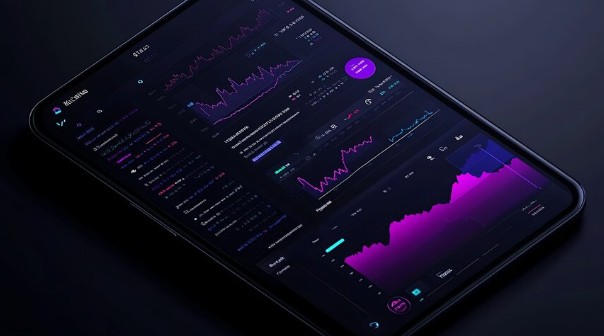The Shocking, Hidden Risks of Future Trading: 5 Must-Know Strategies for Seamless Execution
The Futures App for Futures Trading
In today’s digital trading environment, traders demand seamless, efficient, and feature-rich platforms to manage their futures contract trading. Futures trading requires precision, real-time data, and reliable trade execution. Whether engaging in trading futures for hedging, speculation, or portfolio diversification, choosing the right futures app is crucial. The best futures app delivers unparalleled speed, robust security, intuitive user interfaces, and comprehensive analytical tools to enhance traders’ experiences.
E-Futures.com’s CannonX meets and exceeds these requirements, providing an outstanding platform for futures contract trading. With its fluid trade execution, compliance excellence, and superior customer service, it has earned top ratings across multiple review sites. This article explores the must-have features of elite trading futures platforms and assesses how CannonX measures up.
Top Features of Leading Futures Trading Platforms
Real-Time Market Data and Analytics
One of the most critical aspects of a successful futures trading platform is real-time market data and analytical tools. High-frequency traders and long-term investors alike require instant price updates, advanced charting features, and market trend analysis. Top platforms integrate:
- Live market feeds for instant order placement, ensuring traders can react swiftly to market movements.
- Advanced charting tools with customizable indicators that allow traders to visualize trends, apply technical analysis, and make data-driven decisions.
- AI-powered analytics to detect trading opportunities by analyzing historical price patterns and real-time fluctuations.
- Depth of Market (DOM) displays to provide insight into bid/ask volumes, helping traders understand liquidity and market trends.
CannonX Advantage:
CannonX provides ultra-low-latency market data, ensuring traders have access to real-time information to make informed decisions. Its charting tools support customizable indicators and trend analysis, giving traders a strategic edge. Additionally, its AI-driven insights help traders identify potential market movements and opportunities with greater precision.
Risk Assessment:
While real-time data is essential, reliance on it without sound risk management can lead to impulsive decision-making, increasing the potential for significant losses. Moreover, high-frequency updates can sometimes create false signals, leading traders into premature trades.
Seamless Trade Execution with Minimal Slippage
Executing a trade in a fast-moving market requires minimal slippage and high order accuracy. A leading futures app and trading platform will ensure:
- Direct Market Access (DMA) for rapid execution, reducing the number of intermediaries in a trade and enhancing order fulfillment speed.
- Multiple order types including stop-loss, limit, and market orders, allowing traders to implement various strategies based on market conditions.
- Ultra-fast matching engines to prevent order lags and ensure execution at the best available prices.
- Automated trading capabilities for algorithmic traders who require rapid response times in dynamic markets.
CannonX Advantage:
E-Futures.com’s CannonX excels in order execution speed. It provides direct connectivity to global futures exchanges, ensuring traders execute their strategies without lag or slippage. The platform’s superior matching engine ensures high-speed execution even during periods of extreme market volatility.
Risk Assessment:
Even with top-tier execution speeds, market conditions such as volatility or liquidity constraints can still result in slippage, impacting overall profitability. Traders should use stop-loss and limit orders to mitigate this risk.
Robust Risk Management and Compliance Features
A high-quality futures app and trading platform must offer integrated risk management tools that help traders mitigate exposure and protect capital. Essential features include:
- Automated risk alerts for margin calls and price fluctuations, ensuring traders are aware of potential losses in real time.
- Customizable risk parameters based on trading strategies, helping traders maintain control over their exposure.
- Strict compliance with regulatory bodies like the NFA and CFTC, ensuring that the platform follows the highest standards of transparency and accountability.
- Portfolio diversification tools that allow traders to allocate capital across multiple assets to reduce risk.
CannonX Advantage:
CannonX provides built-in margin monitoring, allowing traders to set risk parameters and receive instant alerts. E-Futures.com maintains top-tier compliance ratings, ensuring safety and transparency for traders. Additionally, the platform includes robust account security measures, such as two-factor authentication and encrypted transactions.
Risk Assessment:
While risk management tools reduce exposure, they do not eliminate risk. Traders must exercise discipline and set appropriate stop-loss levels to mitigate large losses. Overleveraging and ignoring risk warnings can still result in significant financial losses.
Intuitive Mobile Futures App and Desktop Interface
Modern traders need a platform that offers both desktop and mobile accessibility. Features include:
- A seamless, intuitive user experience for easy navigation and efficient trading.
- Full trading functionality on mobile devices, allowing traders to manage positions on the go.
- Cloud-based synchronization between devices, ensuring traders can switch between desktop and mobile without losing data.
- Push notifications and alerts for market movements, keeping traders informed in real-time.
CannonX Advantage:
CannonX offers a cutting-edge mobile futures app that mirrors the full desktop experience. With real-time trade synchronization, traders can seamlessly shift between devices. The app also includes biometric authentication for enhanced security and push notifications for critical market updates.
Risk Assessment:
Mobile trading introduces the risk of connection issues or security vulnerabilities. Using secure networks and two-factor authentication is advisable. Traders should also ensure they have backup access in case of connectivity failures.
Advanced Algorithmic Trading and API Access
Many professional traders and institutional investors rely on algorithmic trading to gain an edge. A top-tier futures app must support:
- Custom trading algorithms to automate strategies and execute trades without manual intervention.
- API integration for third-party tools and data feeds, enabling traders to customize their trading environment.
- Backtesting capabilities for strategy refinement, allowing traders to evaluate their strategies using historical data.
- High-speed execution protocols to ensure that automated trades are completed in milliseconds.
CannonX Advantage:
CannonX supports robust algorithmic trading features with API access for customized strategy implementation. Backtesting capabilities enable traders to optimize strategies before execution. The platform also provides advanced scripting tools for developing custom trading bots.
Risk Assessment:
Algorithmic trading requires careful monitoring. Poorly designed strategies can lead to cascading losses, particularly in volatile markets. Traders should test algorithms extensively before deploying them in live markets.
Exceptional Customer Support and Broker Availability
Customer service is a crucial factor when choosing a futures app and trading platform. Traders need:
- 24/7 support for global market coverage, ensuring assistance is available at any time.
- Direct broker assistance for complex trade execution, providing expert guidance.
- Comprehensive educational resources for all experience levels, helping traders improve their skills.
CannonX Advantage:
E-Futures.com is highly rated for customer service, with knowledgeable brokers available via phone for instant assistance. It boasts 5-star reviews on TrustPilot for its exceptional customer support. Educational resources, including webinars and market analysis, further enhance trader knowledge.
Risk Assessment:
Even with top-tier support, traders must conduct their due diligence and not rely solely on customer service for trade decisions. Self-education and independent analysis are crucial for long-term success.
To open an account with E-Futures.com, please click here.
Ready to start trading futures? Call US 1(800)454-9572 – Int’l (310)859-9572 email info@cannontrading.com and speak to one of our experienced, Series-3 licensed futures brokers and start your futures trading journey with E-Futures.com today.
Disclaimer – Trading Futures, Options on Futures, and retail off-exchange foreign currency transactions involves substantial risk of loss and is not suitable for all investors. Past performance is not indicative of future results. You should carefully consider whether trading is suitable for you in light of your circumstances, knowledge, and financial resources. You may lose all or more of your initial investment. Opinions, market data, and recommendations are subject to change at any time.
Important: Trading commodity futures and options involves a substantial risk of loss. The recommendations contained in this writing are of opinion only and do not guarantee any profits. This writing is for educational purposes. Past performances are not necessarily indicative of future results.
**This article has been generated with the help of AI Technology. It has been modified from the original draft for accuracy and compliance.
***@cannontrading on all socials








